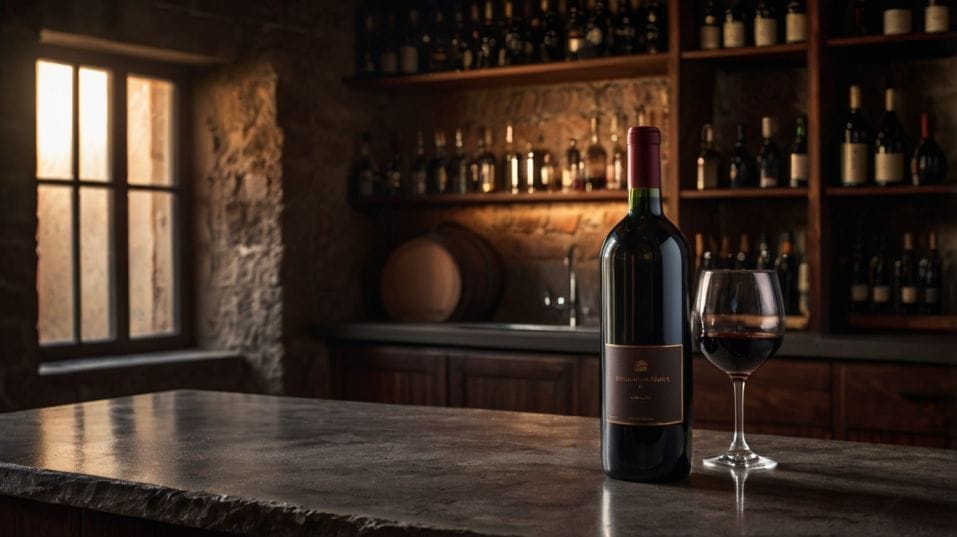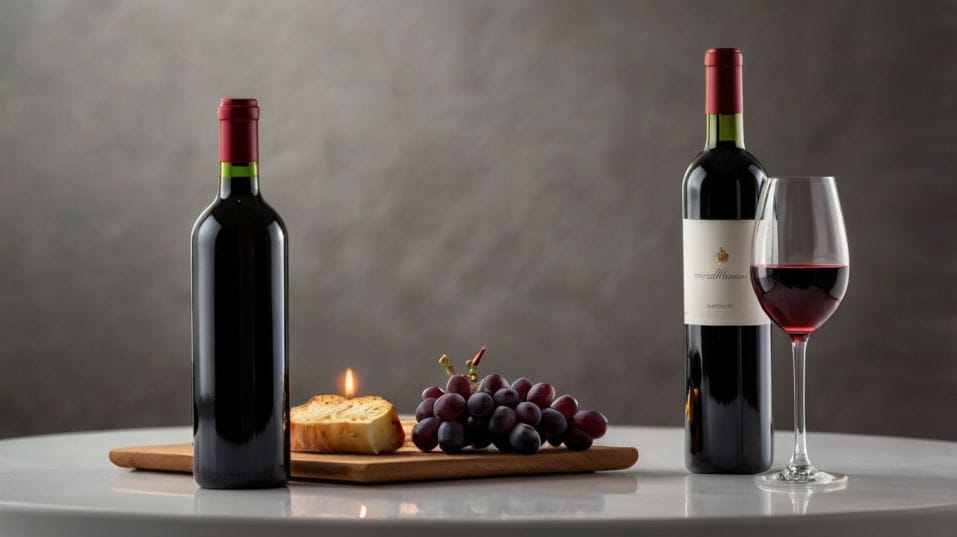Yes, You Can Drink Red Wine Chilled
Think red wine must be warm? Think again. Learn why chilling the right reds unlocks flavor, clarity, and confidence in every sip.

Ever wondered if red wine really has to be served warm? Here’s the truth: chilling red wine—yes, even the “serious” ones—can completely transform the way it tastes.
If you’re just getting into wine or starting to pay more attention to how it behaves, temperature is your secret weapon.
A slight chill can sharpen flavors, reveal texture, and balance alcohol in a way that room temp simply can’t. This isn’t wine rebellion—it’s wine unlocked.
Rethinking “Room Temperature”
The old rule about room temperature red wine came from a time when “room temperature” meant a drafty stone château—not a modern apartment hovering around 72°F (22°C).
That advice lingers, but it doesn’t serve you anymore. Most red wines—especially the ones you’re likely drinking today—show better when they’re cooler than the air around you. And not just in summer.
Warming a red wine too much can smother the nuance and accentuate alcohol. The fruit feels blurred. The finish turns flabby.
A slight chill, on the other hand, sharpens everything: the acidity becomes crisper, the fruit tastes cleaner, and the structure has more clarity.
It’s not about making wine cold. It’s about hitting the right temperature to feel what the wine really wants to express.
What Happens When Red Wine Gets Cooler
Wine is alive in the glass. Temperature changes how you perceive texture, aroma, and balance—core elements that shape the way a wine feels on your palate.

Acidity and fruit come forward.
Cooler temperatures emphasize brightness and make fruit flavors pop with more precision. A lukewarm Gamay might feel mushy; the same wine at cellar temperature tastes vibrant and defined.
Alcohol steps back.
In a wine with higher ABV, warmth amplifies the heat. Chilling helps dial it down, giving the wine a more polished edge.
Tannins tighten.
Cold exaggerates bitterness and grip, which means wines with big structure—like a young Barolo or Napa Cab—can taste harsh if served too cold.
But for low- to medium-tannin reds, that slight firming effect can actually bring welcome tension and lift.
Aromatics shift.
Cooler temperatures mute the nose slightly, which isn’t necessarily bad. It can focus the bouquet, draw attention to the high notes, or make a rustic wine feel more refined.
The takeaway? Chilling red wine isn’t about following a rule—it’s about guiding the experience toward balance.
Which Reds to Chill (and Which to Leave Alone)
Not every red benefits from a chill. The key is knowing your wine’s structure—especially tannin level, acidity, and body.
Start with light to medium-bodied reds with fresh fruit and bright acid. These are the wines that become more expressive with a touch of coolness:
- Gamay (especially Beaujolais)
- Pinot Noir (especially from cooler regions like Oregon or Burgundy)
- Frappato from Sicily
- Zweigelt or Blaufränkisch from Austria
- Cabernet Franc from the Loire
- Grenache/Garnacha—especially in carbonic or low-oak styles
- Valpolicella Classico (not Amarone)
- Lambrusco (always served chilled)
Even natural wines, especially lighter ones with lower alcohol and less tannin, often taste more cohesive and energetic with a chill. Their rawness gets shaped into something more precise.
Wines to be cautious with? Heavily oaked reds, high-alcohol Zinfandels, full-bodied Syrahs, and tannin-heavy styles like Barolo or young Bordeaux.
You don’t need to serve these warm, but they often show best just below room temp—around 60–65°F (15–18°C). Too cold, and they become angular or closed.
How to Chill It Right
You don’t need a wine fridge or fancy gear. You just need to time it right and pay attention.
If your wine is at room temperature:
- Refrigerator: 25–30 minutes is plenty for a light chill.
- Freezer: 10–12 minutes max. Set a timer.
- Ice bucket with water: 10–15 minutes.
If your wine is already chilled:
- Let it sit at room temp for 10–15 minutes before serving.
- Swirl it gently in the glass to warm it slightly.
- Hold it by the bowl (instead of the stem) to bring up the temperature if needed.
Target temperature?
For chillable reds, shoot for 50–55°F (10–13°C). That’s around the temperature of a cool cellar—not cold, just fresh. For bigger reds, aim for 58–62°F (14–16°C) to preserve complexity without the syrupy warmth.
And if you’re unsure? Taste as it warms. The right temperature is the one where the wine feels most balanced, not most “correct.”
Serving Chilled Reds with Confidence
Chilled reds can be more versatile than you’d think at the table. Their freshness opens up pairings that would clash with bigger, warmer reds.
Try a cool-climate Syrah with grilled tuna. A chilled Cabernet Franc with roast chicken or herby lentils. A fizzy Lambrusco with salty prosciutto or pizza.
These wines cut through fat, handle spice, and don’t dominate more delicate flavors the way a high-alcohol red might.
Even in winter, a slightly chilled red can refresh a rich dish without leaning on white or rosé. The idea isn’t seasonal—it’s sensory. You’re matching energy, not just color.
And at gatherings, chilled reds invite exploration. They’re conversation starters. They stand out. They show that you understand wine isn’t fixed—it evolves in your hands, based on what you do with it.
Final Thoughts
Forget what you were told about red wine and room temperature. Serving wine at the right temperature isn’t about breaking rules—it’s about tuning into the wine’s voice and making it sing.
By chilling the right reds just enough, you sharpen your tasting skills, expand your pairing possibilities, and start to feel the structure and balance that separates good wine from great wine.
So don’t wait. Choose a bottle tonight. Stick it in the fridge for half an hour. Pour a glass. Taste it cool, then warm. Notice how the shape, flavor, and energy change. This isn’t a trend—it’s a technique. Use it. Own it. Make it part of how you drink.




